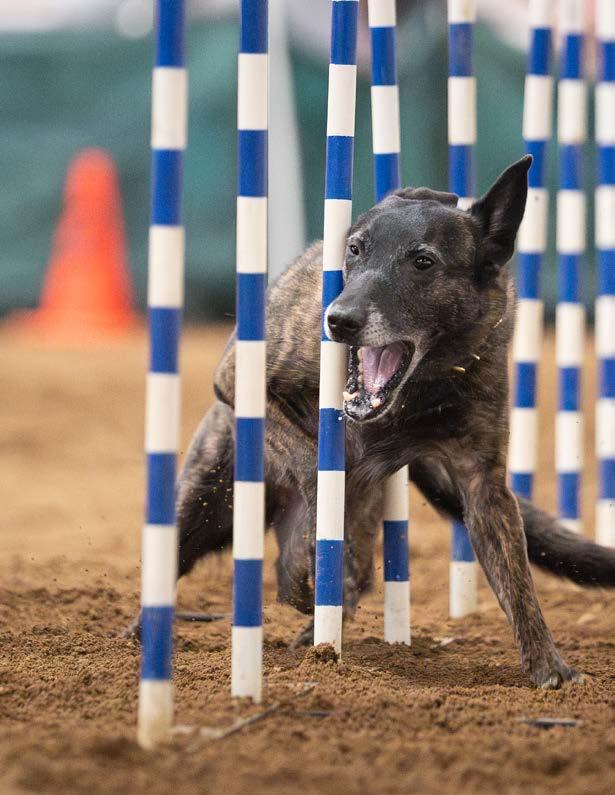
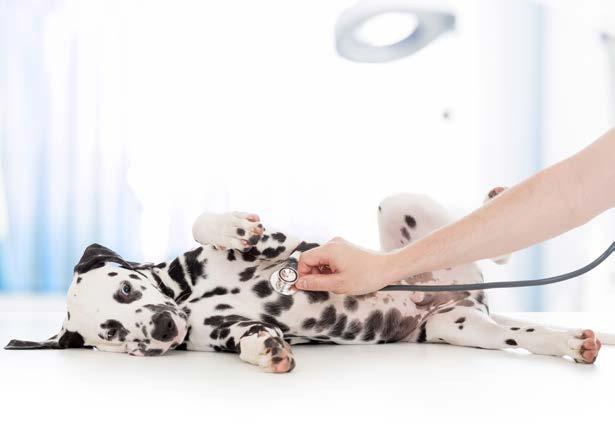

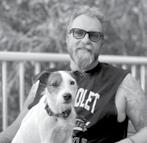





Welcome to the 3rd Annual Winter edition of PAW Quarterly! As we embrace the chilly season, we're thrilled to bring you an issue packed with insightful articles and practical tips for every dog lover. This edition starts with an inspiring guide to setting dog training goals for the year ahead, ensuring you and your furry friend start off on the right paw.
Dive into the exciting world of agility, where you'll discover the joys of this dynamic activity and how it strengthens the bond between you and your pet. Continue with Part Two of "Pawsitive Beginnings," where we delve deeper into the essential role of socialization in our dogs' lives.
You'll also find crucial advice on maintaining your dog's oral health with our dog breath hygiene article and important considerations for when to spay or neuter your pet.
And, of course, don't miss our delightful treats section and events calendar, filled with dog sport trials and competitions, and a delicious recipe to keep your canine companions happy and healthy throughout the winter months.
Here's to a fantastic new year with our beloved pets!
PAWQuarterly
WINTER 2025
Volume 3 | Issue 1
COVER PHOTO
Lianne Matieshin Photography
CONTRIBUTING EDITOR
Shawn Sotkowy
EDITORIAL & SALES
publish@pawquarterly.com sales@pawquarterly.com
DESIGN & PUBLISHING
Tracy Hahn
CONTRIBUTORS
Emily Garland, Nicole Vaughn, Carly Patryluk, and Amanda Abs.
SOCIAL
PAWQuarterly is independently owned and published in Regina, Saskatchewan. Opinions and advice expressed in PAWQuarterly are those of the authors and do not necessarily reflect the views of the publisher or advertisers. PAWQuarterly does not assume liability for content. Articles and information are published for information purposes only. For training, health, or nutritional advice specific to your pet, consult with your veterinarian or a trained professional.
All rights reserved ©PAWQuarterly. Reproduction in whole or in part without permission is prohibited. For reproduction requests, please contact publish@pawquarterly.com.

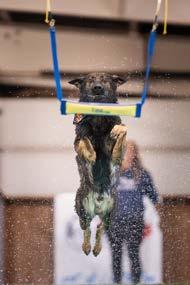
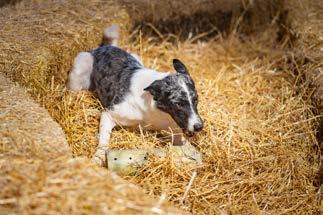











Shawn brings his management skills and dedication to PQ blending his passion for dogs with his editorial endeavours. His research skills and creativity are a great asset lending support and "Taking Care of Business" in every issue. He has loved many different breeds over his lifetime and was introduced to dog sports in 2018.
Emily is a Dog Trainer and Behaviour Specialist with over 15 years of experience in SK and BC. She enjoys hanging with her pack and participates in flyball, agility, rally-o, and stunt. Emily and her rescued Border Collie Jinks became the first titled Canadian Stunt Dog Team.
Carly is the owner of House of Paws Pet Boutique and is certified in a variety of pet nutrition areas. Carly believes in continuous learning and when she’s not working with pet parents at her store, she spends her time developing new and engaging methods to empower pet parents to make the best choices for their pet’s nutrition.


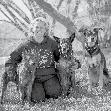
Tracy is a multimedia designer and desktop publisher by day, and a dog sport and training enthusiast by night. Her Olde English Bulldogge, Jack Russell Mix and Mini Heeler Mix keep her busy doing flyball, nosework, agility, and tricks.
Nicole is a veteran dog groomer, trainer, and partner of the Good2Go Dog Sports Club. When she’s not busy making dogs beautiful, you can find her playing flyball, barn hunt, disc, tricks, and agility with several members of her pack.
Amanda is the owner of ABSolute Agility and has been teaching and competing for over 10 years. She has many titles with some of her proudest moments being a 3X Regional Championship Winner (2021-2023) and an overall 6th placement at the 2022 National Agility Championships. Although her passion lies in agility, she also enjoys nosework, flyball, disc, rally, barnhunt, sprinters, tricks, and obedience sports.







As we step into 2025, many of us are setting goals for ourselves, so why not include training goals for our pets? Whether you're an experienced dog owner or a first-time puppy parent, establishing training plans can help improve our relationships, build trust and mutual respect, and develop clear communication with our devoted pets. From mastering basic commands to addressing behavioural issues, the new year offers an opportunity to embark on a rewarding journey of learning and growth with our furry friends.
Focus on commands like "sit", "stay" and "come", in and outside of the home. These are essential for generalization, safety, and communication.

Work on a reliable recall to get your dog to come when called, even around distractions. Make yourself the most rewarding and important thing to your dog.
Teach your dog to heel and walk without pulling on the leash. This will make walking more relaxing and enjoyable for you and your dog.
Keep your dog's mind active with fun tricks like "shake a paw", "roll over", or "spin in a circle". You can also work on trick sequences to entertain family and friends.
Introduce your dog to new people, places, and things to build their confidence and social skills.
Work on common issues like jumping, barking, separation anxiety, or reactivity.
There are many different types of dog sports you can explore, agility, rally obedience, scent detection, flyball, barn hunt, fieldwork, and so much more. Reach out to a local club or training centre for information.
Remember, consistency, clear communication and positive reinforcement are key to success for your pup-partnership. Information on all of these topics and more can be found at pawquarterly.com.

by Carly Patryluk & Sherry Redwine.


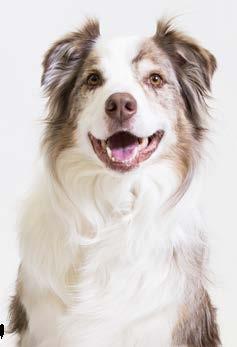
Part One can be found in the summer 2024 edition of PAW Quarterly online at pawquarterly.com.
In our first article on the role of socialization, we dove into many of the genetic elements in play before deciding to bring a puppy into our lives. While genetics take the largest chunk of the pie when it comes to predicting adult behaviours, there are lots of ways we can help our puppies grow to be the best they can be.
The ideal socialization window is from the time we get our puppy home until approximately 16 weeks. By five months, puppies are moving into adolescence and starting a new host of biological changes.
Before five months -preferably by four months- is the time to introduce them to things that will become important parts of their lives as they advance.

Most puppies go through some type of fear period sometime between 7-12 weeks of age, which can be quite difficult if it’s happening at the same time as they head to their new homes. During a fear period, puppies are overly sensitive -based on their temperament- to novel new things. Very confident puppies may only spend a day noticing sounds they never heard, or jumping up if something spooks them. More sensitive puppies may hide, shake, guard, or avoid situations they previously enjoyed. Fear periods can last 1-2 days to more than a week. They can also be very prone to one-eventlearning, which means that something even mildly traumatic during a fear period can stay with them for their whole life. It’s important during a fear period, that exposure to novelty is limited to reduce the chance for oneevent learning. Some puppies may come into another fear period near the end of the socialization period.

As puppies are still updating their shots, you will need to ensure they are both safe, but also socialized. When we are looking to socialize our puppies, we can divide activities into things we can do at home and things we do out of the home.
From there, we want to ensure our socialization is positive! Positive does not mean that the dog is always joyous, bouncing and engaging. Positive simply means that the dog is comfortable in their interactions and not pushed to engage or interact. It is up to each puppy -not their people- to decide if an experience is positive for them or not. We can only set-up our socialization to minimize the chance of a poor experience.

allows the dog to watch and acclimate to new environments. If you think of your puppy as an adult, you likely don’t want a dog who bombs around on the end of their leash looking for people to jump on our dogs to run around with. Teaching your puppy that most of the time they are only interacting with you in an environment, helps them bond with you and leads to fewer instances of difficult behaviours such as leashreactivity.
Of all the socialization: watch but don’t touch, is the best base we can give our puppies.
When we are socializing puppies, one of the biggest mistakes people make is they feel the need for their puppy to directly interact with dozens of people and dogs. Socialization is not interaction -though it plays a role-. Socialization is exposure to the world around you and should focus on the areas of life your dog will need to navigate as an adult. Exposure
It’s important to know each puppy (and the dog they grow into) has their strengths and weaknesses. While we might never make a very shy puppy exceedingly outgoing, we can work towards our puppy growing into the least shy version their genetics may be capable of.
The ideal socialization window is from the time we get our puppy home until approximately 16 weeks.

Teaching your puppy that most of the time they are only interacting with you in an environment, helps them bond with you and leads to fewer instances of difficult behaviours .
Socialization is not a one-size-fits-all situation. Focusing on the quality of your socialization versus the quantity is often the best way, both for your puppy and for your own anxiety! We never get things completely right, so take that weight off your shoulders. You -and your puppy- are going to do the best you can.
Instead of focusing exclusively on your puppy, now is the time to consider all the situations and environments your dog will need exposure and confidence in, as an adult.
Some basics of socialization: being comfortable in a crate -at some point in your puppy’s life they will likely need one-, car-rides -even farm dogs will likely need to see the vet-, exposure to various people who are staples in your life and grooming.
From the basics, instead of moving through a checklist, focus your attention on the key areas that matter to YOUR home.
If you want your dog to be more likely to accept new visitors, they should be socialized well with people coming into their home in the early weeks. If you are a dog sport home, you take your puppy with you to the agility trials, or flyball tournaments, so they get used to that environment. If you want to have kids at some juncture in

your dog's life, find a way to expose them to young children both inside and outside your home during the socialization period.
You might not be able to do it all, but you can stack the odds in your favour.
Puppies develop quickly! Sometimes an experience that is positive one day, does not seem positive the next. Look for signs of stress such as licking lips, yawning, shaking, tucked tail, avoiding interaction, and hiding behind your legs -to indicate it’s time to give the puppy a break or remove them altogether. From there, don’t take it personally! Puppies grow quickly and can be tired, have a big brain growth day, or are simply a bit overwhelmed. It’s our job to protect our puppies. Don’t leave them in situations that cause them hardship.
Some puppies are up for daily socialization. Others need break days in between. Although the socialization window is short, it’s important not to try to cram as much as you can in, at the expense of the dog’s emotional state. Socialization is about helping dogs feel COMFORTABLE. If they are not comfortable, we are not socializing them in a way that’s good for our puppies and risk making them more fearful as adults.
One of the difficult things about socialization is that you can do EVERYTHING well, and still have a dog with problems. Even as a professional for 15+ years, I’ve had a puppy, who came off a farm, and was outside of being somewhat stand-offish, was a rather normal puppy. When he got to 5-6 months, he hit an extreme fear period and became a very fearful adolescent. Although some of it waned, he was still an extremely fearful adult dog. He wasn’t a bad dog, but even professional socialization did not overshadow his genetics.
As much as the Internet likes to tell us “It's all in how you raise them”, we’re only a piece of the puzzle. So, take your time, enjoy your puppy and do the best you can, without fear that you’re screwing it all up. The most wonderful thing about dogs, is they don’t care how bad we are at something, they are going to love us unconditionally anyway.
EMILY GARLAND, CPDT‑KA, MFA Trainer and Behavioural Specialist



Agility continues to be one of the fastest-growing dog sports in Canada, and around the world, and for good reason. The sport gives your dog the mental and physical exercise they need to be happy dogs, but most importantly it develops a deep and loving bond where both the handler and dog “run as one”. Check it out and see what the hype is all about.
Agility is a dog sport where your dog is handled through a pre-set numbered obstacle course. There are many different obstacles to navigate in the
course such as various types of jumps, tunnels, weave poles, see-saw, dogwalk, a-frame, tire, and pause tables. It can be trained as a recreational sport, where you can spend some extra free time having fun with your dog, or it can also be advanced to higher levels for those who want to compete in trials. Several different organizations have trials to compete in and they vary based on the country. Canada currently recognizes the Agility Association of Canada (AAC), the Canadian Kennel Club (CKC), UK Agility International (UKI) and the
North American Dog Agility Council (NADAC) agility organizations.
Competing can be done locally, but if you want to get more serious you can also compete on National and International levels. It all depends on how much time and dedication you want to put into this wonderful sport. Most agility trials in Saskatchewan are AAC, but there are still a couple offered by each organization each year. You can visit each organization’s website for more details.

One of the amazing aspects of agility is that you can choose how much or how little you would like to train, it is all up to you and your dog!
It has been said that agility is addicting, as most people start playing agility as a recreational hobby, and soon builds into a love for the competing aspect of the game.
Agility can be played with all breeds and ages of dogs and people. It is an excellent sport for high-energy dogs, puppies, seniors and more laid-back breeds. Agility is both mentally and physically stimulating for both the dog and handler. Handlers can be of all ages, from junior handlers to senior handlers and if you are physically limited, you can train in distance handling, it is truly a sport for all. It is important to note that puppies and senior dogs will need exercise and course modifications for safety, but they can still enjoy all the benefits of having fun in the sport.
As a sport, it is important to remember to warm up and cool down your dogs and yourself when training. This good practice keeps the dog and handler safe and in great shape to play this amazing sport!

To get started in the sport you can find a reputable online course and local experienced coaches. Many of the foundation skills required in agility can be taught in the comfort of your own home such as engagement, sit stays, creating value for hand and body positions, flatwork (what I like to call “agility dancing”), and more. You will want to find in-person classes at some point to start learning the obstacles and how to handle sequences and courses. Safety is of the utmost importance. Finding a club with current training experience and safe equipment should be a priority. Clubs committed to the longevity of the sport invest in keeping up with policies, equipment, and training techniques as the sport continues to evolve.
Agility is truly a lifelong learning sport, and there are so many ways to handle an agility course. Every agility course you encounter will be different and that is what keeps this sport so exciting!
Agility truly is a sport like no other where two living beings become one. It's just you and your dog dancing the agility dance within an obstacle course demonstrating the bond you have with your dog to be able to communicate with each other in a ring with nothing but your body motion and verbal commands. It's a beautiful feeling of trust, commitment and devotion. Nothing beats the feeling of running an agility course as one unit with your dog, and this is why people will tell you to be careful, as agility will quickly become an addiction!
Get out there today and play some agility with your dogs, you won’t regret it!
PHOTOS BY Lianne Matieshin Photograpy Candice Daum Photography

Did you know your dog’s breath really shouldn’t smell bad?
Aside from being the obvious aftermath of snacking on some unsavoury stuff, bad breath in dogs can be a symptom of serious health concerns like diabetes, liver, and kidney disease.
A
common cause of bad breath in dogs is periodontal disease, which, if left untreated, can damage your dog’s heart and more. It’s important to note that many dogs are already showing some signs of periodontal disease by the age of two.
Plaque, tartar, and bacteria buildup are the common culprits that lead to gingivitis and eventually gum recession, tooth decay, and infection, which can all cause stinky breath or halitosis. Even if your dog’s breath smells okay, you may notice other concerning signs of trouble brewing such as bleeding gums, loose teeth, or changes in behaviour. Dogs in pain can be quite stoic, but consider sudden irritability, no longer wanting to chew, tug, or fetch, a loss of appetite or unplanned weight loss, even increased sneezing or drooling can all be signs that something might be happening.
In growing puppies, you’ll want to be sure to watch for retained or misaligned teeth that may lead to more serious dental issues down the road if they don’t correct on their own.
Feeding your dog a quality diet, offering plenty of opportunities to chew dental sticks, bones, and regularly brushing your dog’s teeth, using specially formulated dental powders or water additives may help keep up with your dog’s oral hygiene.
Know that even doing these things at home, your dog will still need and benefit greatly from regular veterinary dental care. Some dogs may even be genetically predisposed to having poor development of their teeth or have other health conditions that
complicate matters, and those dogs may require more frequent appointments to stay on top of things.

If any signs of periodontal disease are appearing in your pet, you should schedule an appointment with your veterinarian to perform an exam, and if necessary, have x-rays, run tests, or bloodwork to be sure your dog is a candidate for a dental cleaning. Even if your pet's teeth appear healthy, below the gum line might be a different matter, and your dog may need more than just scaling and polishing.
Investing in your dog’s oral hygiene will not only make them feel better, but it will help ensure they stay healthy and keep their kisses fresh for you to enjoy!
NICOLE VAUGHN Grooming Manager Pawsitively Purrfect

AWARENESS MONTH
Increased Cancer Risks: Early spaying, particularly in female dogs, has been linked to a higher risk of certain cancers, including mammary gland tumors. Similarly, early neutering in males can increase the risk of prostate cancer.
Joint Disorders: Early neutering has been associated with a higher incidence of joint disorders such as hip dysplasia and cranial cruciate ligament tears. These conditions can cause significant pain and mobility issues for pets.
Hormonal Imbalances: Hormones play a crucial role in the growth and development of pets. Early spaying or neutering can disrupt the hormonal balance, leading to various developmental issues.
Traditionally, spaying or neutering has been performed when pets are as young as four to six months old. However, studies have shown that early spaying or neutering can lead to various health issues later in life. Understanding the importance of timing can help pet parents make more informed decisions about their pets' health.
Improved Physical Development: Allowing your pet to mature before spaying or neutering ensures that their bones and joints develop properly. This reduces the risk of orthopedic issues and contributes to overall physical health.
Behavioural Stability: Pets that reach sexual maturity before being spayed or neutered often display fewer behavioural problems. For example, male dogs are less likely to exhibit aggression or marking behaviours, and female dogs may show improved social interactions.
Reduced Health Risks: By waiting until your pet is two years old, you significantly reduce the risk of hormone-related cancers and joint disorders. This leads to a healthier and potentially longer life for your pet.
Every pet is unique, and the best time to spay or neuter can vary based on individual health, breed, and lifestyle factors. It’s essential to have a thorough discussion with your integrative veterinarian to determine the optimal timing for your pet. Your vet can provide personalized recommendations based on the latest research and your pet’s specific needs.
Spaying or neutering your pet is a responsible decision that contributes to population control and reduces the number of unwanted animals. However, the timing of this procedure is crucial for maximizing its benefits and minimizing potential health risks. Waiting until your pet is at least two years old can lead to better physical development, reduced risk of certain health issues, and improved behavioural stability. Always consult with your integrative veterinarian to make the best decision for your furry family's health and well-being.

CARLY PATRYLUK House of Paws Pet Boutique
Reference: https://peterdobias.com/blogs/ blog/should-you-spay-or-neuter-your-doghow-to-avoid-long-term-health-effects

E-Z Mobility™ is based on TCM theory containing the herbs: Notopterygium root, Siler root, Rehmannia root, Gentian root, Angelica root, Turmeric rhizome and Acanthopanax bark. These herbs are combined with methylsulfonylmethane (MSM), which is known for its support in the relief of osteoarthritic conditions. It’s a great choice to support your dog’s and cat’s mobility!

Also available to support your pets’ bones and joints!


9 Contains D-Glucosamine sulphate, Chondroitin sulphate & MSM
9 Improves joint mobility
9 Helps to protect against the deterioration of cartilage
9 Helps to maintain knee & joint health
9 Improves performance and daily activity restricted by impaired mobility
9 Available in 120 mL, 250 mL, 500 mL, 1L & 4L sizes


9 Joint complex: D-Glucosamine sulphate, Chondroitin sulphate & MSM
9 Connective support from Hyaluronic Acid & Hydrolyzed Collagen
9 Has essential vitamins & minerals
9 For healthy skin, hair, fur & pet’s coat
SinewPet™ is used to support and maintain the healthy development of bones, muscles, joints, ligaments and tendons. It nourishes the skin and fur for a healthy and beautiful coat, and aids in digestion and normal functioning of the digestive system. Veterinary approved. Available in 250g & 500g sizes.

FEB 15 17, 2025 MB
CKC CONFORMATION, OBEDIENCE & RALLY
Crocus Obedience & Kennel Club
Canada Room, Keystone Centre, 1175 18th St, Brandon, MB crocusdogs.com prairieskykennel@gmail.com
FEB 21 23, 2025 SK
AAC ‑ Agility Trial
Furever Fun Dog Training
Over The Top Riding Arena Moose Jaw, SK dsweekes.wixsite.com/furever-fun dsweekes@shaw.ca
FEB 21‑23, 2025 SK
BARN HUNT
Westman Rat Wranglers
4Limb Gym-Gym Rats Building South Service Road E., Regina, SK tinyurl.com/Westman-Rat-Wranglers mayleefischer@hotmail.com
FEB 22/23, 2025 AB
AAC Agility Trial
Dynamo Dogsports
Training Hall, 9519 49th St., Edmonton, AB dogsport.org dogsport.org@hotmail.com
FEB 28/29, 2025 AB
AAC ‑ Agility Trial
Top Spot Agility
Okotoks Agricultural Society Okotoks, AB topspotagility@gmail.com
MAR 1/2, 2025 AB
AAC Agility Trial
Free Spirit Dogs #103 & 104 2321 - 9 St., Nisku, AB freespiritdogs.com hannah@freespiritdogs.com
MAR 1/2, 2025 SK
FLYBALL
KAOS Dog Sports 1311 Ottawa St., Regina, SK kaosdogsports.ca 1dogaholic@gmail.com
MAR 1/2, 2025 AB
CKC OBEDIENCE
Alberta Obedience Group
Parkland Kennels West 53119 Range Rd 280, Parkland County, AB facebook.com/abobediencegroup alnlee@shaw.ca
MAR 7, 2025 SK
AAC Agility Trial
Furever Fun Dog Training
Over The Top Riding Arena Moose Jaw, SK dsweekes.wixsite.com/furever-fun dsweekes@shaw.ca
MAR 7 9, 2025 AB
BARN HUNT
Flatlands Kennels 5107 65 St., Lloydminster (Part), AB culturedcanines.ca info@culturedcanines.ca
MAR 14 16, 2025 AB
BARN HUNT
Prairie Dog Sports Inc.
To see the events calendar or to submit your own event visit the events page at pawquarterly.com.
Lacombe and District Agricultural Society Show Barn, 4210 58 St., Lacombe, AB prairiedogsports.ca prairiedogsports@outlook.com
MAR 15, 2025 SK
AAC Agility Trial
Standsure Agility Club
395 - 38 St E, Prince Albert, SK facebook.com/groups/www.bordercollie.ca standsure@sasktel.net
MAR 15/16, 2025 AB
AAC ‑ Agility Trial OC Agility
Sturgeon County Agriplex 25021 Twn Rd, 554, Morinville, AB ocagility.com trials@ocagility.net
MAR 15/16, 2025 SK
RALLY OBEDIENCE
Saskatoon Kennel & Obedience Club
Featherz Kennel, 108 Willow Road, Aberdeen, SK saskatoonkennelobedienceclub.com
MAR 15/16, 2025 MB
AAC ‑ Agility Trial
Crocus Obedience and Kennel Club
Keystone Centre (Ace Arena) 1175-18th Street, Brandon, MB crocusdogs.com kintyre@wcgwave.ca
MAR 15, 2025 AB
SDDA Nosework Trial
Sniff Addicts Scent Detection
Private Location 9 Km SW of Strathmore, AB sdda.ca albertadogsportsupplies@gmail.com
MAR 21‑23, 2025 AB
CKC CONFORMATION, OBEDIENCE & RALLY
Battle River Canine Association Camrose Regional Exhibition 4250 Exhibition Drive, Camrose, AB arcticdreams.ca kat_mclaugh@yahoo.ca
MAR 23, 2025 AB
SDDA Nosework Trial
Nosey Barkers
Aspen Crossing, Mossleigh, AB sdda.ca
MAR 28‑30, 2025 SK
CKC OBEDIENCE
Wascana Dog Club
513 Ross Ave. E., Regina, SK wascanadogclub.com lwilkinson@sasktel.net
APR 4‑6, 2025 SK
AAC ‑ Agility Trial
Furever Fun Dog Training
Over The Top Riding Arena Moose Jaw, SK dsweekes.wixsite.com/furever-fun dsweekes@shaw.ca
APR 4‑6, 2025 AB
CKC CONFORMATION, OBEDIENCE & RALLY
Red Deer & District Kennel Club Westerner Park, 4847 19 St., Red Deer, AB arcticdreams.ca kat_mclaugh@yahoo.ca
APR 6, 2025 AB
SDDA Nosework Trial
Horizon Truck Body 1415 39St N., Lethbridge, AB sdda.ca cinbarkley@gmail.com
APR 11‑13, 2025 AB
BARN HUNT
Prairie Dog Sports Inc. Prairie Dog Sports Facility 41403 Range Road 274, Lacombe, AB prairiedogsports.ca prairiedogsports@outlook.com
APR 12, 2025 SK
AAC Agility Trial
Standsure Agility Club 3D Distributors (indoor) 395 - 38 St E, Prince Albert, SK facebook.com/groups/www.bordercollie.ca standsure@sasktel.net
APR 12/13, 2025 AB
AAC ‑ Agility Trial
OC Agility
Sturgeon County Agriplex 25021 Twn Rd, 554, Morinville,AB ocagility.com trials@ocagility.net
APR 13, 2025
SDDA Nosework Trial
Sniff & Tell Scent Detection
Shaughnessy Community Hall 133 3 St., Shaughnessy, AB sdda.ca shaunaferby@hotmail.com
APR 13, 2025 MB
AAC Agility Trial
Crocus Obedience and Kennel Club
Keystone Centre (Barn 3) 1175-18th Street, Brandon, MB crocusdogs.com kintyre@wcgwave.ca
APR 18‑20, 2025 SK
AAC ‑ Agility Trial
Furever Fun Dog Training
Over The Top Riding Arena
Moose Jaw, SK dsweekes.wixsite.com/furever-fun dsweekes@shaw.ca
APR 18/19, 2025 AB
SDDA Nosework Trial
Nosey Barkers
Integrity Building Products 48223 338 Ave E, Okotoks, AB sdda.ca mia.staysko@gmail.com
APR 18 21, 2025 SK
BARN HUNT
Westman Rat Wranglers
4Limb Gym-Gym Rats Building South Service Road E., Regina, SK tinyurl.com/Westman-Rat-Wranglers mayleefischer@hotmail.com
APR 18 20, 2025 AB
AAC ‑ Agility Trial
Dynamo Dogsports
Training Hall 9519 49th ST., Edmonton, AB dogsport.org dogsport.org@hotmail.com
APR 26 27, 2025 SK FLYBALL
Diamonds in the Ruff 215 Railway Ave., Dalmeny, SK diamondsflyball.ca C.lumsdenbitternose@hotmail.ca
APR 26 27, 2025 AB
AB
CKC ‑ OBEDIENCE & RALLY
Lethbridge & District Kennel Club North County Sportsplex 108 4 St. N., Picture Butte, AB lethbridgekennelclub.com ldkctrials@gmail.com

You can make your own apple sauce with 2 lbs (4 apples) of cored and chopped apples and 1 cup of water. Boil until broken down and purée. Simmer until the sauce has thickened. After you have made the treats, add some sugar, a splash of lemon juice and a pinch of salt and keep the rest to yourself.

Homemade treats are the perfect way to show your furry friend how much you care.
Not only are these treats delicious and full of natural sweetness, but they're also packed with wholesome ingredients. Apple Oat Cookies are made with oats for fibre and apple sauce for a boost of vitamins. Whether as a reward during training or a special treat on a cozy winter's day, these cookies will surely become a favourite in your pup's diet.
• 2 1/2 cups rolled oats (quick oats)
• 1 egg
• 1/2 cup plain no sugar added applesauce
• a dash of cinnamon and a pinch of salt (optional)
Preheat your oven to 350°F.
1. In a food processor, grind the oats to a flour-like texture.
2. Add the egg and applesauce and mix to combine. If the mixture is too wet, add more oats, if too dry you can add more apple sauce.
3. For drop cookies, use a teaspoon and flatten with a fork or, roll out onto a floured surface and use a cookie cutter.
4. Bake treats for 18 – 20 minutes or longer for crunchier treats.





